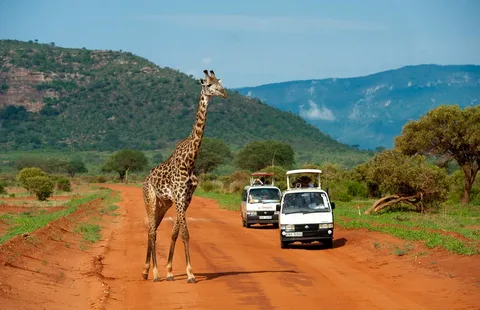Kenya, the land of sprawling savannas teeming with wildlife, beckons with the promise of an unforgettable safari adventure. But beyond the memories etched in your mind, you’ll want to capture the essence of your journey through stunning photographs. This guide equips you with essential photography tips to ensure you return home with a collection of breathtaking images from your Viaje a Kenia.
Gear Up for Success:
The right equipment is crucial for capturing captivating safari photos. Here’s what you’ll need:
- Camera: A DSLR or mirrorless camera with interchangeable lenses offers the most flexibility. A good zoom lens (ideally 200mm or more) is essential for capturing wildlife close-ups without disturbing them. Consider a wide-angle lens for capturing expansive landscapes.
- Spare Battery and Memory Cards: Pack enough spare batteries and memory cards to last the entire trip. Unexpected wildlife encounters can drain your battery quickly, and you don’t want to miss a crucial shot due to a full memory card.
- Tripod: A sturdy tripod will ensure sharp images, especially in low light conditions or when using slow shutter speeds for capturing motion blur.
- Beanbag: A beanbag provides a stable platform for resting your camera on the safari vehicle window or other uneven surfaces.
- Lens Cleaning Kit: Dust is a constant presence on safari. A lens cleaning kit will ensure your photos remain crystal clear.
Mastering the Light:
Light is the essence of photography. Here’s how to use it to your advantage on safari:
- Golden Hour Magic: The golden hour, just after sunrise and just before sunset, offers the most flattering light for wildlife photography. The warm hues create a magical glow, enhancing the textures and colors of your subjects.
- Embrace Overcast Skies: Don’t despair if the skies are overcast. Diffused light can be ideal for capturing wildlife portraits without harsh shadows.
- Be Mindful of Midday Sun: The harsh midday sun creates strong shadows and washed-out colors. Consider using a lens hood to minimize lens flare or seek shade during these times.
Focus on Your Subject:
Composing your shots effectively is crucial. Here are some tips to keep in mind:
- Fill the Frame: Get close enough to your subject to fill the frame, eliminating distracting background elements.
- Rule of Thirds: Imagine dividing your viewfinder into a 3×3 grid. Place your subject at the intersection points of the grid for a more aesthetically pleasing composition.
- Focus on the Eyes: The eyes are the window to the soul, even in animals. Sharp focus on the eyes will draw the viewer into your photograph.
- Capture Movement: Experiment with slower shutter speeds to capture the dynamism of wildlife in motion. Use a tripod for stability and adjust your settings accordingly.
Respecting Wildlife and the Environment:
Responsible wildlife photography is paramount:
- Maintain a Safe Distance: Always zoom in with your lens instead of approaching animals too closely. Respect their space and avoid disturbing them.
- Obey Park Regulations: National parks and reserves have specific guidelines regarding photography. Be familiar with the rules and avoid using flash photography, which can startle animals.
- Minimize Environmental Impact: Dispose of empty batteries and memory cards responsibly. Avoid littering and respect the natural environment.
Beyond the Big Five:
While capturing iconic images of the Big Five is a safari dream, don’t neglect the smaller details:
- Bird Photography: Kenya boasts a diverse birdlife. Early mornings and late afternoons offer the best light for capturing these feathered wonders.
- Landscape Shots: Capture the vastness of the savanna plains, dramatic sunrises, or dramatic sunsets that paint the sky with vibrant colors.
- Macro Photography: Look for interesting textures, patterns, and intricate details in flowers, insects, or animal tracks. These close-up shots can add a unique perspective to your safari photography collection.
Editing for Enhancement:
Once you return from your safari, basic photo editing software can help enhance your images. Adjust lighting, exposure, and color balance for a more polished look. However, avoid excessive editing that detracts from the natural beauty of your photographs.
Sharing Your Safari Story:
Share your captivating Kenyan safari photographs with the world! Post them on social media, create a photo album, or even participate in photography competitions. Your images can inspire others to embark on their own African adventures and appreciate the beauty of Kenya’s wildlife and landscapes.
By following these tips and letting your creativity flow, you’ll return home from your Kenyan safari with a collection of photographs that capture the magic of your adventure and serve as

